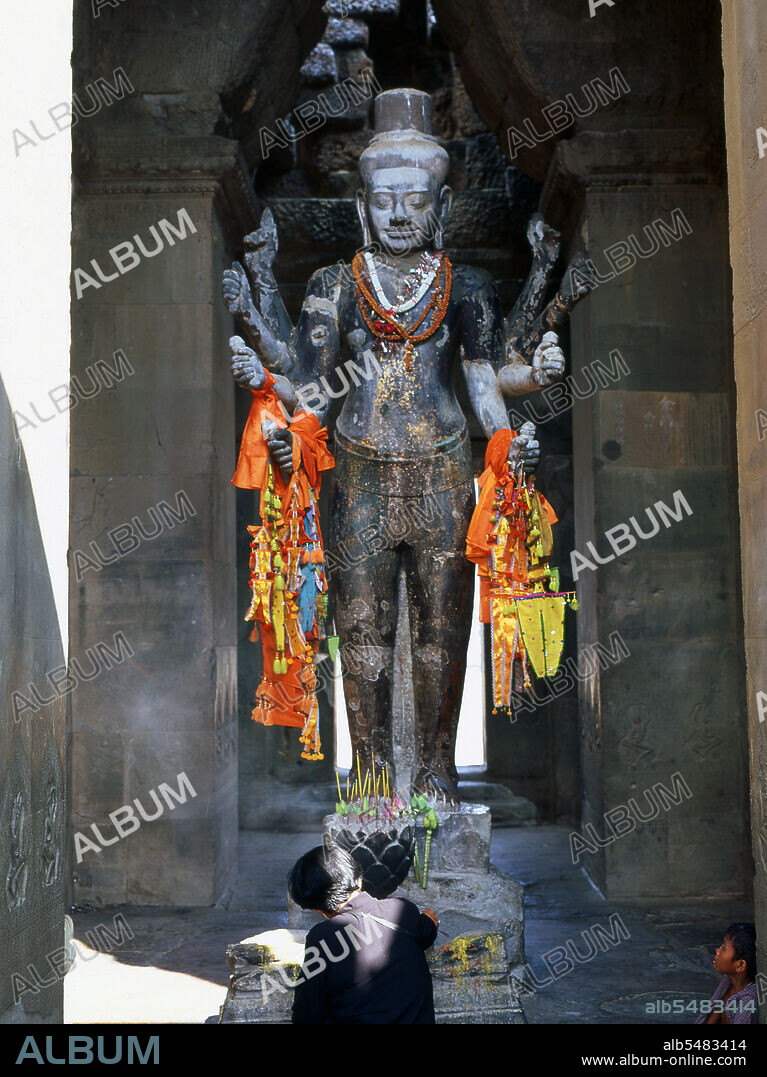alb5483414
An eight armed Vishnu statue at Angkor Wat.

|
Ajouter à une autre Lightbox |
|
Ajouter à une autre Lightbox |



Avez-vous déjà un compte? S'identifier
Vous n'avez pas de compte ? S'inscrire
Acheter cette image.
Sélectionnez l'usage:

Titre:
An eight armed Vishnu statue at Angkor Wat.
Légende:
Voir la traduction automatique
Angkor Wat was built for King Suryavarman II (ruled 1113-50) in the early 12th century as his state temple and capital city. As the best-preserved temple at the Angkor site, it is the only one to have remained a significant religious centre since its foundation - first Hindu, dedicated to the god Vishnu, then Buddhist. It is the world's largest religious building. The temple is at the top of the high classical style of Khmer architecture. It has become a symbol of Cambodia, appearing on its national flag, and it is the country's prime attraction for visitors. Angkor Wat combines two basic plans of Khmer temple architecture: the temple mountain and the later galleried temple, based on early South Indian Hindu architecture. It is designed to represent Mount Meru, home of the devas in Hindu mythology: within a moat and an outer wall 3.6 kilometres (2.2 mi) long are three rectangular galleries, each raised above the next. At the centre of the temple stands a quincunx of towers.
Crédit:
Album / Pictures From History/Universal Images Group
Autorisations:
Modèle: Non - Propriété: Non
Questions sur les droits?
Questions sur les droits?
Taille de l'image:
3687 x 4925 px | 52.0 MB
Taille d'impression:
31.2 x 41.7 cm | 12.3 x 16.4 in (300 dpi)
Mots clés:
ANGKOR WAT • ARCHITCETURE • ARCHITECTURE • ARCITECTURE • ART (CATÉGORIE) • ART • ASIE • ASIE, CONTINENT • BOUDDHISME • BOUDDHISTE • BOUDDIQUE • CAMBODGE • CAMBODIAN • CONTINENT ASIE • HIDOUISME • HINDOU • HINDOUE • HINDOUISME • HISOIRE • HISTOIRE • RELIGION • RELIGION: BOUDDHISME • SIEM REAP • TEMPLE • TEMPLES
 Pinterest
Pinterest Twitter
Twitter Facebook
Facebook Copier le lien
Copier le lien Email
Email
